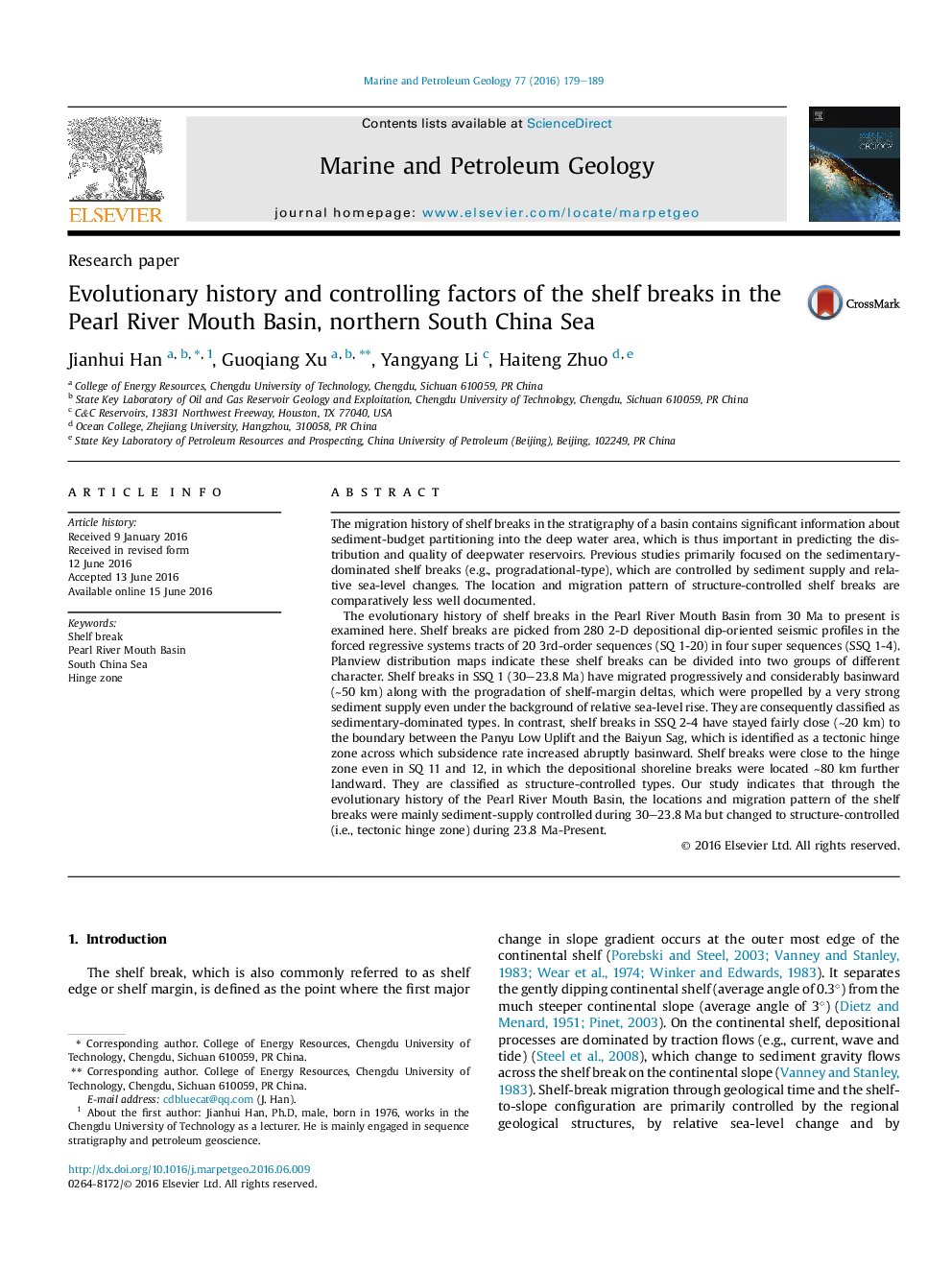| Article ID | Journal | Published Year | Pages | File Type |
|---|---|---|---|---|
| 6434539 | Marine and Petroleum Geology | 2016 | 11 Pages |
â¢Shelf breaks are picked in forced regressive deposits after strata restoration.â¢Shelf breaks controlling factors change through geological time.â¢Shelf breaks in SSQ 1 are sedimentary-dominated.â¢Shelf breaks in SSQ 2 are structure-dominated.â¢A tectonic hinge zone is identified as a new structure that controls shelf breaks.
The migration history of shelf breaks in the stratigraphy of a basin contains significant information about sediment-budget partitioning into the deep water area, which is thus important in predicting the distribution and quality of deepwater reservoirs. Previous studies primarily focused on the sedimentary-dominated shelf breaks (e.g., progradational-type), which are controlled by sediment supply and relative sea-level changes. The location and migration pattern of structure-controlled shelf breaks are comparatively less well documented.The evolutionary history of shelf breaks in the Pearl River Mouth Basin from 30Â Ma to present is examined here. Shelf breaks are picked from 280 2-D depositional dip-oriented seismic profiles in the forced regressive systems tracts of 20 3rd-order sequences (SQ 1-20) in four super sequences (SSQ 1-4). Planview distribution maps indicate these shelf breaks can be divided into two groups of different character. Shelf breaks in SSQ 1 (30-23.8Â Ma) have migrated progressively and considerably basinward (â¼50Â km) along with the progradation of shelf-margin deltas, which were propelled by a very strong sediment supply even under the background of relative sea-level rise. They are consequently classified as sedimentary-dominated types. In contrast, shelf breaks in SSQ 2-4 have stayed fairly close (â¼20Â km) to the boundary between the Panyu Low Uplift and the Baiyun Sag, which is identified as a tectonic hinge zone across which subsidence rate increased abruptly basinward. Shelf breaks were close to the hinge zone even in SQ 11 and 12, in which the depositional shoreline breaks were located â¼80Â km further landward. They are classified as structure-controlled types. Our study indicates that through the evolutionary history of the Pearl River Mouth Basin, the locations and migration pattern of the shelf breaks were mainly sediment-supply controlled during 30-23.8Â Ma but changed to structure-controlled (i.e., tectonic hinge zone) during 23.8Â Ma-Present.
